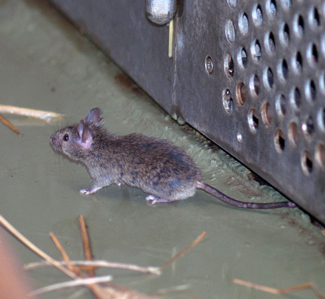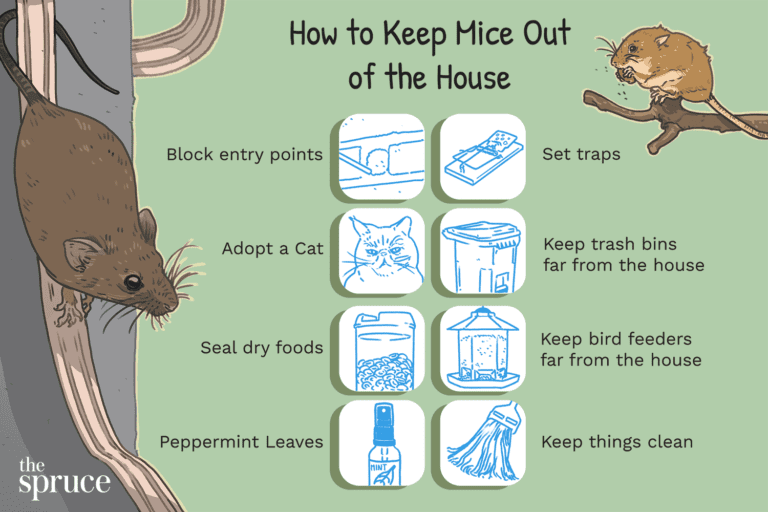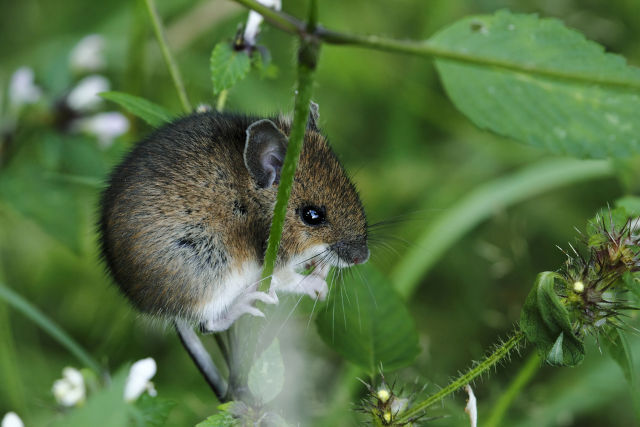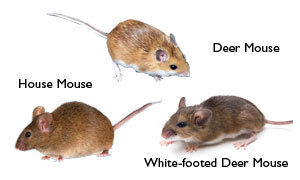Field Mice vs. House Mice: How to Tell the Difference
Overview
Introduction to field mice and house mice
Field mice and house mice are two common types of mice that can be found in both rural and urban areas. While they may look similar at first glance, there are several key differences that can help you identify which type of mouse you are dealing with. Field mice, also known as meadow mice, are typically found in outdoor areas such as fields, gardens, and grassy meadows. They have a slender body and long tail, and their fur color can vary from gray to brown. On the other hand, house mice are more commonly found indoors, particularly in homes and buildings. They have a smaller body and shorter tail compared to field mice. Additionally, house mice are known for their ability to reproduce rapidly, making them a common pest problem for homeowners. By understanding the differences between field mice and house mice, you can better identify and address any mouse infestations in your home. If you are looking for tips and tricks to prevent paper lice infestations, click here.
Importance of distinguishing between field mice and house mice
Distinguishing between field mice and house mice is of utmost importance for several reasons. Firstly, these two species have different habits and behaviors, which can impact the measures taken for their control. Field mice, also known as meadow mice, are primarily outdoor creatures that inhabit fields, gardens, and grassy areas. On the other hand, house mice are well-adapted to living indoors and are commonly found in homes, buildings, and other structures. Secondly, field mice and house mice pose different risks and threats. While field mice can cause damage to crops and gardens, house mice are notorious for their ability to contaminate food and spread diseases. Lastly, accurately identifying the type of mouse infestation is crucial for implementing effective pest control strategies. By understanding the differences between field mice and house mice, homeowners and pest control professionals can tailor their approach to effectively eliminate these unwanted pests.
Methods for telling the difference between field mice and house mice
Differentiating between field mice and house mice can be challenging, but there are several methods that can help. One key distinction is the size of the mice. Field mice are typically larger than house mice, with an average length of 3 to 4 inches compared to the 2 to 3 inches of house mice. Another noticeable difference is their habitat. Field mice prefer outdoor environments such as fields, gardens, and meadows, while house mice are commonly found indoors, particularly in homes and buildings. Additionally, their behavior can provide clues. Field mice are more likely to be active during the day, while house mice are nocturnal creatures. It is also important to consider their diet. Field mice primarily feed on seeds, grains, and plants, while house mice are opportunistic eaters and will consume a wide range of foods. By observing these characteristics, it becomes easier to distinguish between field mice and house mice.
Physical Characteristics
Size and weight
When it comes to size and weight, there are key differences between field mice and house mice. Field mice are typically smaller and lighter than house mice. On average, field mice measure around 3 to 4 inches in length, including their tail, and weigh between 0.5 to 1 ounce. In contrast, house mice are slightly larger, measuring around 7 inches in length, including their tail, and weighing between 0.5 to 1.1 ounces. These differences in size and weight can be attributed to the different habitats and lifestyles of field mice and house mice.
Fur color and texture
When it comes to fur color and texture, there are distinct differences between field mice and house mice. Field mice typically have a lighter brown or grayish fur color, while house mice have a darker brown or blackish fur color. In terms of texture, field mice have a softer and smoother fur compared to the rougher and coarser fur of house mice. These differences in fur color and texture can be helpful in distinguishing between the two species.
Tail length and shape
The tail length and shape is a key characteristic that can help differentiate between field mice and house mice. Field mice typically have longer tails compared to house mice. Their tails can measure up to 4 inches in length, while house mice have shorter tails, usually around 3 inches long. In addition to length, the shape of the tail also differs between the two species. Field mice have slender, cylindrical tails, while house mice have slightly thicker tails with a more rounded appearance. These differences in tail length and shape can be useful in identifying and distinguishing between field mice and house mice.
Habitat and Behavior
Preferred habitats of field mice
Field mice and house mice have distinct preferences when it comes to their habitats. Field mice, also known as meadow voles, are commonly found in grassy areas such as fields, meadows, and gardens. They prefer areas with dense vegetation and ample cover, such as tall grasses, shrubs, and brush piles. On the other hand, house mice are more adaptable and can be found in a variety of indoor and outdoor environments. They are often found in homes, barns, warehouses, and other structures where they can find food, water, and shelter. While field mice are primarily outdoor creatures, house mice have successfully colonized human settlements and can thrive in urban areas as well. It is important to understand these habitat preferences in order to effectively identify and control mouse infestations.
Preferred habitats of house mice
House mice are common pests that can be found in a variety of habitats. However, they have a preference for living in residential areas where they have easy access to food and shelter. These pesky rodents are known for their ability to squeeze through tiny openings and make their way into homes, causing damage and spreading diseases. To prevent infestations, it is important to implement effective residential pest control measures. By sealing cracks and openings, removing food sources, and using traps or baits, homeowners can keep house mice at bay and protect their homes from these unwanted guests.
Behavioral differences between field mice and house mice
Field mice and house mice may look similar at first glance, but they have distinct behavioral differences. Field mice are more active and agile, often seen running and climbing. They are excellent jumpers and can easily navigate through tall grass and shrubs. House mice, on the other hand, are more cautious and tend to stay close to their nests. They prefer to scurry along walls and furniture, seeking shelter and food. Additionally, field mice are known to be more curious and exploratory, while house mice are more secretive and territorial. Understanding these differences can help in identifying and managing mouse infestations in the appropriate manner.
Diet and Feeding Habits
Food preferences of field mice
Field mice have distinct food preferences that set them apart from house mice. One important factor that influences the food choices of field mice is moisture. These mice are attracted to food sources that have higher moisture content, such as fruits, vegetables, and grains. They have a preference for fresh produce and will often seek out gardens, orchards, and agricultural fields where they can find these types of food. The moisture in these foods provides field mice with hydration as well as nutrition. Additionally, field mice are known to consume seeds and nuts, which also contain moisture. By understanding the food preferences of field mice, it becomes easier to create strategies for their control and prevention.
Food preferences of house mice
House mice have a wide range of food preferences, making them adaptable and successful in various environments. These mice are known to consume grains, seeds, fruits, and vegetables, as well as small insects and meat. Their ability to feed on a diverse range of food sources allows them to survive and thrive in both urban and rural settings. Understanding the food preferences of house mice is essential for effective pest management strategies. By identifying and eliminating their preferred food sources, such as stored grains or unsecured garbage, homeowners and pest control professionals can significantly reduce mouse populations and prevent infestations.
Feeding habits and foraging behavior
Field mice and house mice have distinct feeding habits and foraging behavior. Understanding these differences can help in identifying which type of mouse is present in your surroundings. Field mice, also known as meadow mice, primarily feed on plant materials such as seeds, nuts, fruits, and grasses. They are adept at foraging in open fields and meadows, where they can find an abundance of vegetation. In contrast, house mice are opportunistic omnivores and will eat almost anything they can find. They are known to scavenge for food in human dwellings, including crumbs, grains, and even small insects. Their ability to adapt to various environments makes them a common pest in residential areas. By observing the feeding habits and foraging behavior of mice, one can determine whether they are dealing with field mice or house mice.
Reproduction and Life Cycle
Gestation period and litter size
The gestation period and litter size are important factors to consider when distinguishing between field mice and house mice. Field mice have a shorter gestation period of about 19 to 21 days, while house mice have a slightly longer gestation period of about 19 to 24 days. In terms of litter size, field mice typically have smaller litters, with an average of 4 to 6 pups per litter. On the other hand, house mice have larger litters, with an average of 6 to 8 pups per litter. These differences in gestation period and litter size can be helpful in identifying the type of mice infestation in a particular area.
Maturation and sexual maturity
Maturation and sexual maturity play a crucial role in the life cycle of both field mice and house mice. During this stage, these small rodents undergo significant physical and behavioral changes that prepare them for adulthood. It is important to understand the differences in maturation and sexual maturity between these two species in order to effectively manage and control their populations. Field mice typically reach sexual maturity at around 6-8 weeks of age, while house mice reach maturity slightly earlier, at around 5-7 weeks. This difference in timing can have implications for the risks associated with population growth and the potential for infestations. By being aware of these differences, homeowners and pest control professionals can take appropriate measures to prevent and address mouse-related issues.
Life span and reproductive capacity
Field mice and house mice have different life spans and reproductive capacities. Field mice typically live for about 1-2 years in the wild, while house mice have a slightly shorter lifespan of around 1 year. In terms of reproductive capacity, field mice have the ability to produce multiple litters per year, with each litter consisting of around 4-7 pups. On the other hand, house mice have a higher reproductive capacity and can produce up to 10 litters per year, with each litter containing around 5-6 pups. Understanding the differences in life span and reproductive capacity between field mice and house mice is important for pest control and prevention strategies. By knowing these differences, individuals can implement effective measures to manage and eliminate mouse infestations in their homes and fields.
Health Risks and Control
Diseases transmitted by field mice
Field mice can transmit several diseases to humans. It is important to understand the differences between field mice and house mice to identify the potential health risks. One of the most common diseases transmitted by field mice is Hantavirus Pulmonary Syndrome (HPS). This disease is caused by inhaling or coming into contact with urine, droppings, or saliva of infected mice. HPS can lead to severe respiratory distress and can be fatal. Another disease transmitted by field mice is Lyme disease, which is caused by the bite of infected ticks that feed on mice. Lyme disease can cause symptoms such as fever, fatigue, and joint pain. To prevent the transmission of these diseases, interventions such as proper sanitation, rodent-proofing homes, and using protective clothing when handling mice or cleaning areas where they are present are crucial. By implementing these interventions, the risk of contracting diseases from field mice can be significantly reduced.
Diseases transmitted by house mice
House mice are known to transmit several diseases to humans. One of the most common diseases transmitted by house mice is salmonellosis, which is caused by the bacteria Salmonella. This disease can be contracted by consuming food or water contaminated with mouse feces or urine. Another disease transmitted by house mice is hantavirus pulmonary syndrome (HPS), which is caused by the hantavirus. HPS can be contracted by inhaling dust particles contaminated with the virus, typically found in mouse droppings. Additionally, house mice can transmit lymphocytic choriomeningitis virus (LCMV), which can cause flu-like symptoms in humans. It is important to take precautions to prevent the transmission of these diseases, such as keeping food stored in sealed containers and maintaining a clean living environment.
Methods for controlling field mice and house mice infestations
Controlling field mice and house mice infestations requires a combination of proactive measures and targeted treatments. One of the most effective methods is to eliminate potential entry points by sealing cracks and gaps in the foundation, walls, and windows. Additionally, keeping the surrounding area clean and free of food sources can help deter mice from entering the premises. Traps and baits can be used to capture and eliminate mice already present. It is important to choose the appropriate type of trap or bait based on the specific mouse species. Consulting with a professional pest control expert can provide valuable guidance in identifying and addressing the infestation. Taking prompt action is crucial, as mice can reproduce rapidly and cause significant damage to property and pose health risks to humans.









